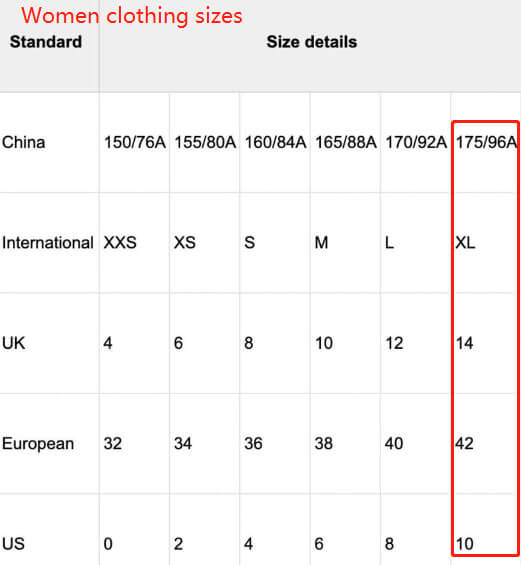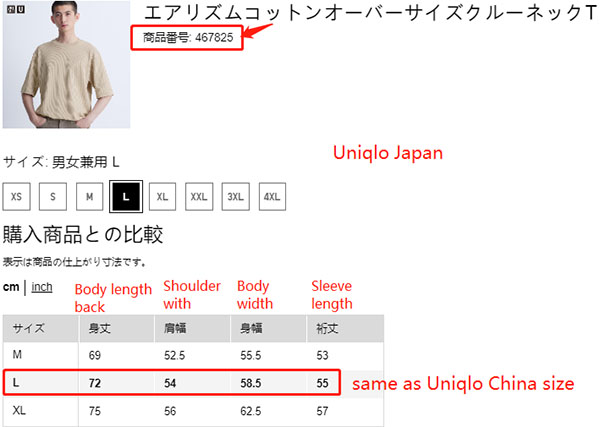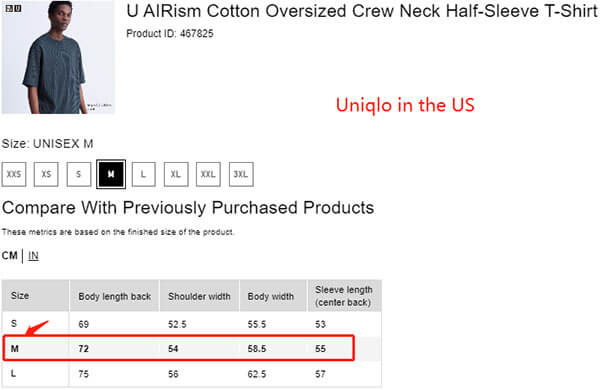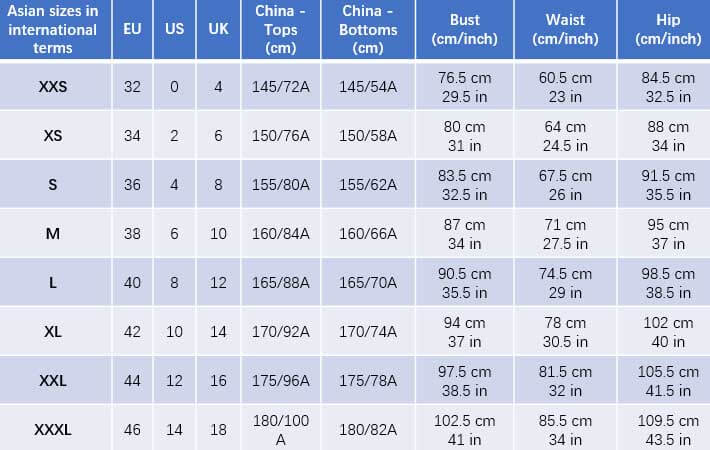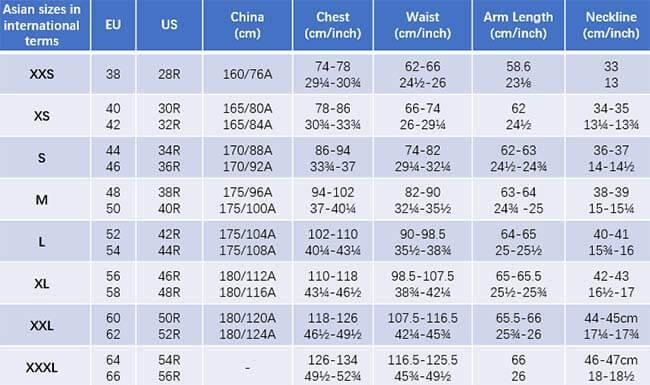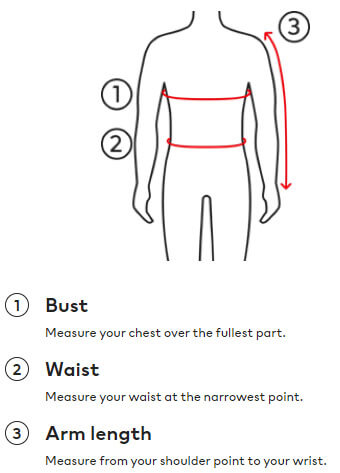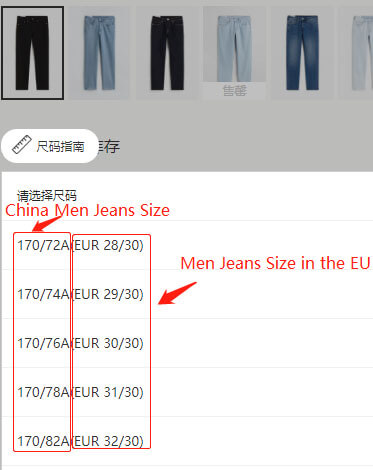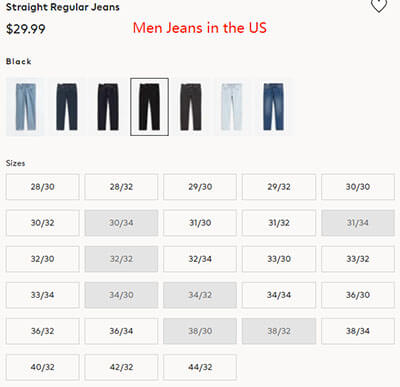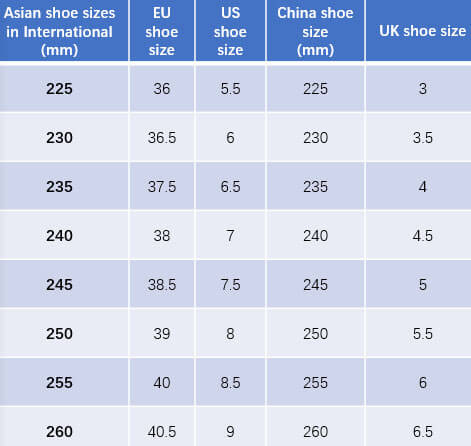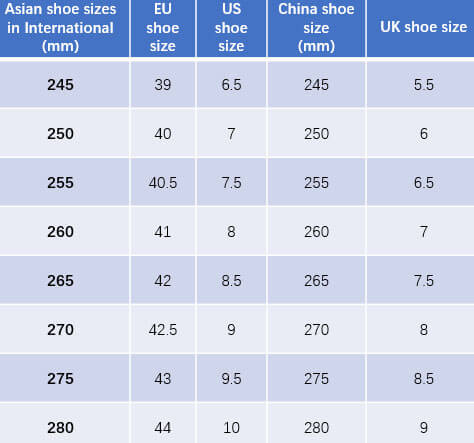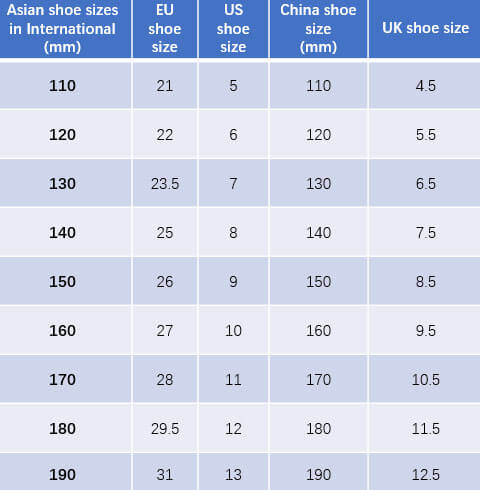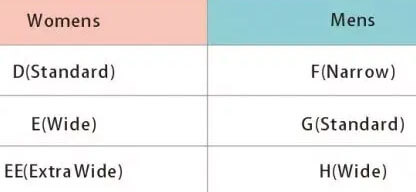Compared to other products, clothing and shoes have much more complex sizing. Additionally, with online shopping, consumers cannot try on their purchases like they can in physical stores to determine if the size is right.
As a seller in e-commerce, understanding that customers in different regions have different size standards and preferences is crucial. Providing accurate size conversions for your target consumers can reduce the risk of returns, enhancing customer satisfaction and shopping experience. Today’s blog is tailored just for you.
What is the international standard size, Asian size, and American size?
ISO standard sizes
ISO 8559 is the latest international clothing size standard and sizing system issued by ISO (the International Organization for Standardization) to facilitate global clothing trade and production. International clothing size standards typically define sizes for both adult and children’s clothing, as well as sizing standards for footwear and accessories.
The international sizes for clothing use labels such as S, M, L, and XL, representing Small, Medium, Large, and Extra Large, respectively. This universal international reference framework makes it easier for consumers, manufacturers, and traders to understand and apply size information.
Different countries have unique sizing systems and making.
Based on international sizing, different regions and countries have their own size standards and representation methods, for example, Asian sizes, European sizes, American sizes, UK sizes, etc. Because there exist variations in body types and proportions among populations, influenced by factors such as genetics, dietary habits, and lifestyles.
On the whole, North American and European people have larger body sizes than Asian people. So, compared to Asian clothing sizes, EU and US clothing sizes tend to be larger, including sizes like XXL in addition to S, M, L, and XL. In practice, clothing brands and retailers typically provide detailed size information.
In China, clothing sizes are often represented by specific measurements of height and chest circumference (in centimeters) along with body type indicators (A/B/C). “A” usually represents standard body type, “B” indicates slightly plump, and “C” represents chubby. The distinction between body types is determined by the difference between chest and waist circumference.
For adult clothing in the UK, numerical sizes are commonly used, such as 4, 6, 8, 10, 12, etc., where smaller numbers indicate smaller sizes. In the US, sizes are typically below 10. In European countries, sizes are also represented by numerical codes, such as 32, 34, 36, 38, etc., with larger numbers indicating larger sizes.
Take women’s clothing for example, for the international standard size “XL”, it would be:
“175/96A” in China size.
Here, “175” represents height, “96” represents chest circumference, and “A” usually indicates standard body type. However, for a slightly slimmer woman with a height above 175cm, she might choose a size corresponding to “L” in the 170cm range.
“10” in the US size.
“14” in the UK size.
Asian clothing sizes are smaller than American sizes.
As talked above, Asian individuals such as those from China and Japan typically have smaller body sizes compared to Americans. Therefore, sizes in the Asian market are generally smaller than those in the American market. Asian sizes tend to fit closer to the body shape, while American clothing and pants usually have a wider cut, catering more to the demand for plus-size clothing such as XXL and 4XL.
Take Uniqlo China and Japan T-shirt sizes to the US size for example.
Uniqlo is a Japanese clothing brand and has a wide range of Asian consumers like Chinese, as well as US consumers.
A men’s T-shirt from Uniqlo’s Chinese website with the product ID 467825, size “175/100A (L)”. This indicates that this size is suitable for men with a height of 175 centimeters and a chest circumference of 100 centimeters, corresponding to an international size L.
Uniqlo’s sizes in Japan are the same as those in China. As shown in Picture 2, the Chinese size L is equivalent to the size L in Japan.
However, for the same product ID 467825 men’s T-shirt in the US, the equivalent size is M, as indicated in the red-marked area in Pic 3.
Click to enlarge
As you can see, the L-size T-shirt in China and Japan corresponds to the smaller size “M” in the US. An American XL in Japan should be L.
Even for the same brand, different size standards apply to different countries, catering to local consumers. Therefore, it’s essential to understand and correctly convert sizes, especially for e-commerce businesses purchasing Asian clothing for resale in local markets like the US, EU, etc.
How to convert Asian clothing sizes?
The types of clothing are indeed vast. Here, we’ll divide them into men’s and women’s tops (e.g. T-shirts and jackets) and bottoms (e.g. pants) to introduce Asian sizes and international size conversions. Sizes may vary for different brands or even different styles within the same brand. Here, I’ll use Nike and H&M fashion brands as examples.
Asian women's clothing size chart and international conversion (Nike)
Click to enlarge
Note: Nike’s official website offers women’s tops and bottoms in Asian sizes, which include China and Japan. Additionally, the above table targets regular styles and does not include items such as bras, unisex clothing, children’s clothing, etc.
Asian clothing size conversion chart – men's tops, shirts, jackets (HM)
Click to enlarge
Note: In the above table, the “R” after the numerical size for US men’s pants represents regular pants. If it’s long, “L” will be added after the numerical size.
Jeans sizes are usually in inches, for example, 30/32. The first number represents the waist circumference, and the second number represents the inseam. Below is a screenshot showing H&M men’s jeans sizes in China, the EU and US markets.
Click to enlarge
Size chart conversion tips for clothing e-commerce sellers.
1. Ask your clothing supplier
The best way is to consult your supplier about size details and conversions to list sizing info on your Amazon store or independent e-commerce sites. Experienced clothing suppliers like JingSourcing usually provide size conversion tables, making it easy to convert your products from Asian sizes to the US, EU, and UK sizes.
2. Measure garment samples
Order garment samples to measure chest circumference, waist circumference, shoulder width, hip circumference, etc., to check for accuracy and the need for updates. Additionally, garment samples can help you assess quality. Also, you can start and complete the photography of the actual products along with measurement data to provide consumers with a more intuitive understanding of size and specific information for decision-making.
3. Make size info clear and offer measurement guidance
List specific size data corresponding to different sizes such as S, M, L, etc. Make sure your size charts include international conversions such as Asian, European, and US sizes if your customer base includes these markets.
Also, advise consumers not to rely solely on size labels like “M” but to read the actual measurements you put online. Furthermore, there may be a 2-3 cm difference between clothing size chart information and the actual product. It’s best to include instructions on how to measure oneself accurately to ensure the best fit, and provide recommended ranges for height and weight to help customers choose the appropriate size based on their height and weight.
What is the Asian shoe size conversion chart?
The current international shoe size standard is ISO 9407:1991, known as Mondopoint, which uses foot length measurements in millimeters. Similar to clothing sizes, different countries around the world use different shoe size systems, with some of the most common ones being:
European Shoe Size
Formerly known as “French shoe size”, the European shoe size system is the most widely used worldwide. EU shoe sizes are represented by numbers such as 36, 37, 38, etc., and are measured in centimeters.
US Shoe Size
The US shoe size system also uses numerical representation, such as 6, 7, 8, etc., typically measured in inches. One inch equals 2.54 centimeters.
UK Shoe Size
Also represented by numbers like 4, 5, 6, etc., usually measured in inches. UK shoe sizes are very similar to US shoe sizes, generally below 10, but UK sizes are smaller in value.
Asian Shoe Size
The Asian shoe size system uses centimeters/millimeters as units of measurement and is primarily applied in Asian countries such as China, Japan, and South Korea. And the shoe sizing standards can differ between Asian countries.
The Chinese sizing system focuses on the actual length of the foot, while the Japanese sizing system is based on the shoe’s inner length. Since the inner length of a shoe is typically slightly larger than the length of the foot, the same-size Chinese size shoe would be smaller compared to a Japanese-size shoe. For example, a Chinese size 270 might correspond to a Japanese size 280.
Therefore, I have not specifically mentioned Japan’s size in the following shoe size charts to avoid confusion with Chinese shoe sizes, because although the numerical values are the same, the actual shoe size is different.
Asian children’s shoe sizes and conversions
Asian Shoe Size vs European Shoe Size vs American Shoe Size
Apart from differences in size parameters, there are also differences in shoe styles between Asian, European, and American sizes. Western populations, including North America and Europe, typically have narrower feet, while Asian populations, such as Chinese, tend to have wider feet and higher arches. Therefore, European shoes tend to be narrower in width, while Chinese and Asian shoes often have wider widths to accommodate this need.
Taking the UK shoe brand Clarks as an example, their shoes often run half a size smaller than Chinese shoes. However, Clarks offers the option to choose the width of the shoes. For example, in women’s shoes, “D” represents “Standard,” while “E” represents “Wide.” See below for more details.
Chinese shoe size “230mm” corresponds to the UK shoe size “3.5” in Clarks, and European size “36.5” in the wide version “E”.
Note: Different shoe styles and brands may have variations in sizes. Similar to clothing size charts, the best way is to get a size chart and international conversions from your shoe supplier.
Bottom line
Reach out to JingSourcing when you source from China. As a leading Chinese sourcing company, we have assisted thousands of e-commerce sellers in wholesaling and customizing various products such as t-shirts, hoodies, pants, shoes, etc., giving us extensive experience in these product sourcing.
Not only can we provide you with detailed size information for your desired clothing and shoe types, but we can also help you find reliable suppliers to obtain the most competitive product prices and produce samples. Once the samples are ready, we can also assist you in capturing e-commerce images and videos at affordable prices. Additionally, we will conduct product quality inspections before shipping out of China to ensure that the quality meets your standards.

